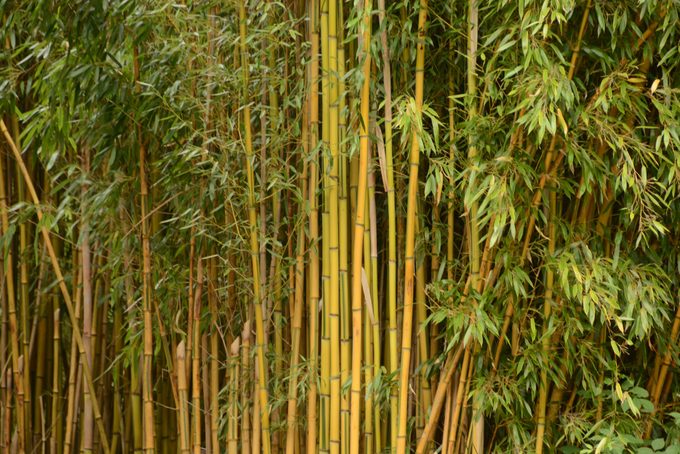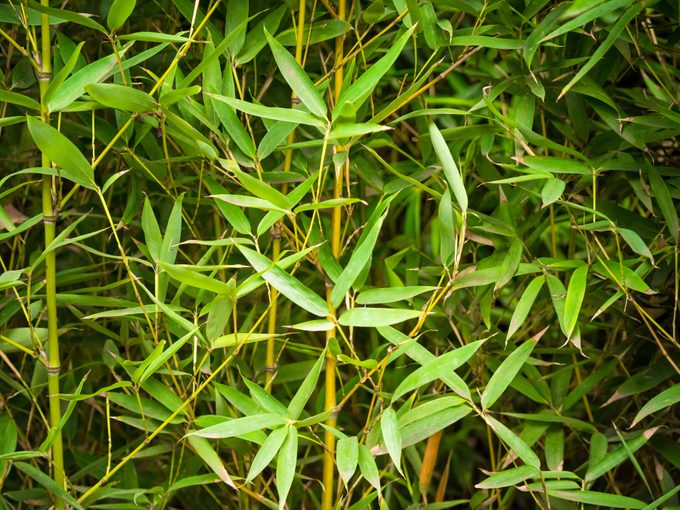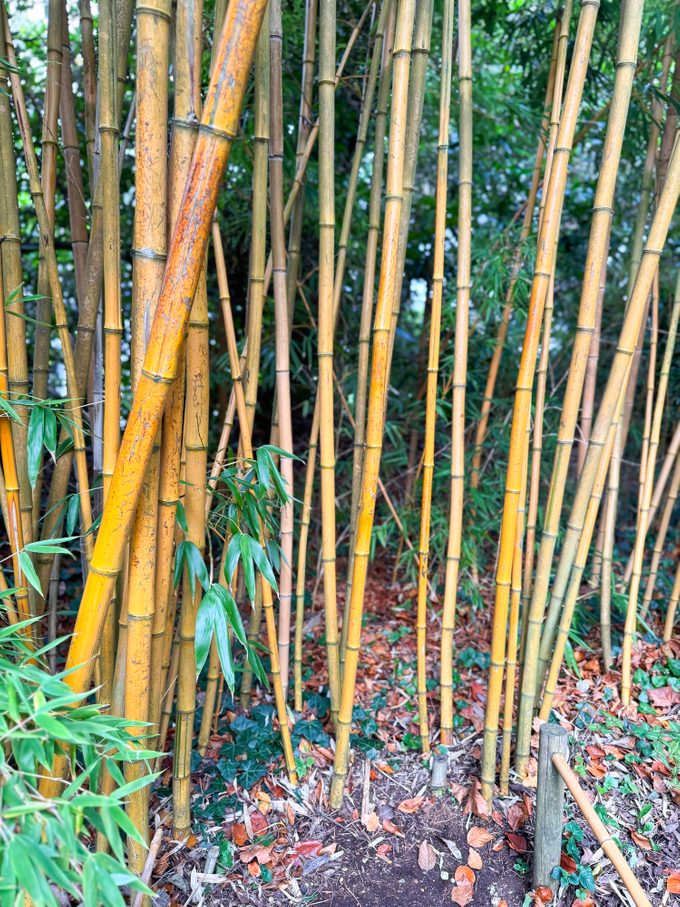It's no easy task, but it can be done. Here's what to know about running bamboo plants, plus some native alternatives.

How to Remove Invasive Bamboo Plants From Your Yard

With an exotic look and a fast growth rate, bamboo plants can be tempting to add in your landscape. But, some types spread aggressively and soon become difficult to manage.
“Running bamboo promises privacy today, and regret tomorrow,” says Spencer Campbell of The Morton Arboretum. “It’s relentless, spreading underground far beyond where it was invited, until one day, you feel like a guest in your own garden.”
Here’s what to know about planting bamboo, invasive types to avoid, and how to get rid of it if it has invaded your landscape.
On This Page
Why Bamboo Plants Are Problematic

Some bamboo species are notorious for spreading aggressively. These “running” varieties can cross fences, damage sidewalks, and be challenging to remove.
“When it escapes cultivation, bamboo can also invade forests, wetlands and other natural ecosystems, where it forms dense monocultures, displacing native vegetation and reducing biodiversity,” says Mary Phillips of the National Wildlife Federation.
Bamboo plant species to avoid include:
- Phyllostachys, including yellow groove, golden, black, giant Japanese timber and Chinese timber.
- Pleioblastus, which stay shorter but still overrun garden beds with surprising speed.

Conversely, clumping bamboos, such as species in the Fargesia genus, tend to stay in one place and are much easier to manage, says Spencer.
How to Identify Invasive Bamboo Plants

Invasive bamboo plants shoot up rapidly, forming dense thickets that quickly expand beyond their original planting area. Look for underground stems (rhizomes) and shoots emerging several feet from the main clump. Invasive bamboos also have hollow stems segmented with visible joints, and narrow, pointed leaves, that usually grow in pairs.
Why Do People Plant Bamboo?
People like bamboo because it forms a fast-growing privacy screen, helps with erosion control and has a tropical look. But, it’s easy to underestimate how quickly it can spread and how difficult it is to remove.
How Does Bamboo Spread?
Bamboo spreads by using rhizomes, which grow horizontally under the soil before sending up new shoots several feet away from the main plant. The rhizomes tend to follow soft or moist areas, extending up to 20 feet in a season. Sometimes, fragments of new shoots (culms) can also root and develop into new plants.
Where Is Bamboo Native and Invasive?

Bamboo is native to Asia, parts of Africa and the Americas. One species, giant cane bamboo (Arundinaria gigantea), is native to the southeastern U.S. Running bamboo species have become invasive in much of the country, especially in the Southeast, Mid-Atlantic and parts of the Pacific Northwest.
How to Get Rid of and Contain Bamboo Plants
“Getting rid of bamboo is notoriously difficult,” says Mary. “Cutting down the canes or mowing will not kill it, but rather often stimulates more vigorous growth.”
- Install a robust underground barrier, at least 24 to 30 inches deep, around existing plants.
- Cut all of the canes to the ground to stop the plant from photosynthesizing.
- Dig out the rhizomes. “It’s slow work, but every piece left behind is a potential regrowth point,” says Spencer.
- Herbicides can work, though results vary, and it’s vital to follow local guidelines.
- Do not compost removed bamboo, as it can further the spread.
- Stay vigilant: monitor the site for two to five years, cutting down or digging up new shoots.
Some gardeners also try smothering the area with thick, black plastic for an entire growing season, which can help suppress regrowth, says Spencer.
Bamboo vs. Japanese Knotweed

Japanese knotweed is a herbaceous perennial and bamboo a woody grass. Both plants form dense thickets and spread aggressively using underground rhizomes. Japanese knotweed also spreads via stem fragments and seeds. While bamboo is still used in landscaping, Japanese knotweed is rarely planted intentionally and is banned outright in some places.
“Bamboo might crack pavement or creep into neighboring yards, but knotweed takes it a step further,” says Spencer. “While removing bamboo is challenging, knotweed is even more persistent, often bouncing back from tiny root fragments.
Native Alternatives to Bamboo

Depending on where you live, try these native plants to add privacy (use the NWF’s Native Plant Finder to check if a species is native to your zip code):
- Wax myrtle
- Inkberry holly
- Viburnums
- Arborvitae
- Ornamental grasses, including switchgrass, big bluestem, Indian grass, bottlebrush grass and silver grass.
For shrub borders, try:
- Serviceberry
- Red chokeberry
- Spicebush
About the Experts
- Spencer Campbell is the Arboretum Plant Clinic Manager at The Morton Arboretum in Lisle, Illinois. The Plant Clinic is a free nationwide service providing home gardeners and green professionals with plant and growing advice.
- Mary Phillips is head of native plant habitat strategy/certifications at the National Wildlife Federation. As an ambassador for nature, she keeps habitat gardening programs flourishing with sustainable practices and ever-evolving scientific knowledge.




















